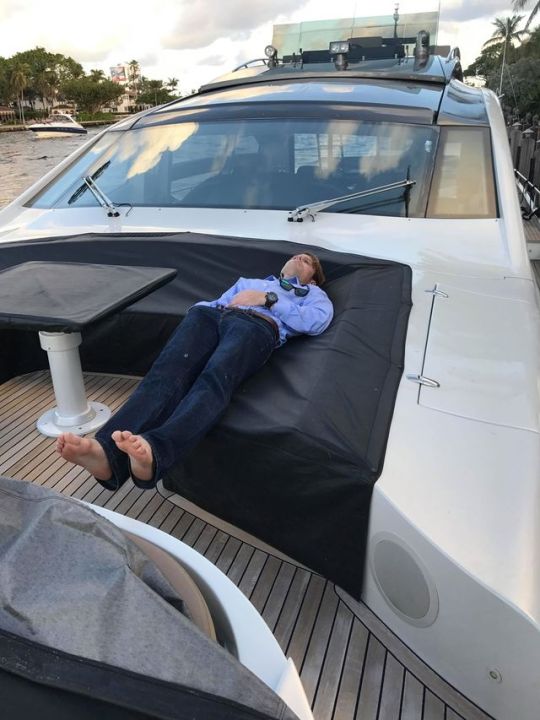Josh Stewart, born in Florida, became an attorney, handled high volume insurance litigation, now work with an e-commerce company at www.buydmi.com and www.livetofish.com
Don't wanna be here? Send us removal request.
Text
If you’re new to the sport of inshore saltwater fishing, you may not be aware of the importance of using a leader. A leader is a separate piece of line you attach to your main fishing line. The importance of a leader is found in simply considering how much more difficult it is for a fish to break a 30 or 40 pound test leader than it is your 10 or 15 pound test fishing line. A fishing line’s strength is called the “test,” and it’s measured in “pounds.” Hence, the term “pound test.” In addition to a leader having an obvious increase in numbers concerning the pound test, the best leader material will provide more abrasion resistance than your fishing line. When pursuing inshore saltwater gamefish such as snook, a leader will often make the difference between landing the snook or having a lost fish. The inside of a snook’s lips are rough; like sandpaper. Same with redfish. It makes sense for snook and redfish to have tough mouths. One of the creatures each feeds on is blue crabs. They need to be able to crush the crab’s shell in order to consume the crab without injury. If you never considered what functions the mouth and jaws of these fish must accomplish in order to ensure their survival, being aware will help you understand the importance of a leader. At the end of your leader is your lure or hook with bait. As far as your fishing line is concerned, the leader is the last section of line between you and the fish. Making that last link as strong as you can, while not overdoing it, will lead to you landing more fish than losing them during the fight.

Fishing Leader Material from Live to Fish
With few exceptions, your main fishing line will be composed of either braid or monofilament. Your leader will be composed of either fluorocarbon or monofilament; with fluorocarbon being preferable. Basically, the only material you don’t see used as a leader for inshore saltwater fishing is braided line. The reason for braid’s omission as a leader material is due to the fact that braid is highly visible to fish. It’s often in a solid dark color. Even when it’s white, it’s still very apparent. Being highly visible is a factor you’re looking to avoid when selecting a leader material. You don’t want fish to see your line. You certainly don’t want them to see anything attached to your lure or hook. Just as you won’t catch anything if seaweed ends up on your presentation, no bait fish swims around with line coming out of it’s body and pointing towards the surface. Snook and trout have exceptional eyesight. Redfish can see well enough but tend to find their prey through their sense of smell. Regardless, you stand to catch more fish by avoiding the appearance of a link between you and what you’re using to catch fish.
Some of the braided fishing line options available in the showroom at Live to Fish, 9942 State Road 52, Hudson, FL 34669
What is fluorocarbon? When manufactured, fluorocarbon is comprised of a carbon base combined with a polymer. A polymer is a synthetic or naturally occurring compound in which smaller molecules bond to form a larger compound. The chemical properties of fluorocarbon classify it as a perfluoroalkanes. Perfluoroalkanes are very stable because of the strength of the carbon–fluorine bond, one of the strongest in organic chemistry. In other words, fluorocarbon is incredibly durable and resilient.
Fluorocarbon fishing leader in different pound test line strengths
Aesthetically, fluorocarbon looks the same as monofilament. Aside from appearance, the similarities between fluorocarbon and monofilament are few. The differences between the two are many. One noteworthy difference is what is referred to as “line stretch,” or the ability of a fishing line to “give.” Monofilament stretches. Fluorocarbon does not. In fact, fluorocarbon is helpful for instantaneous, solid hook sets. Another difference involves what’s referred to as “line memory.” Line memory is best exemplified by picturing fishing line pulled off a fishing reel spool, and that fishing line remaining in a tightly coiled shape. Remaining tightly coiled would be evidence of line memory. Monofilament has far more line memory than fluorocarbon.
Fluorocarbon is beneficial for use as a leader material because of how difficult it is for fish to see underwater. The near invisibility comes from having a refractive index that is approximately equal to that of water. The refractive index determines how much light is bent, or refracted, when entering a material. Given the nearly equivalent refractive index with water, light passes through fluorocarbon fishing line almost as easily as passes through water. Hence, it’s invisibility. For reference, water has a refractive index of 1.333. Fluorocarbon’s refractive index is 1.42. With only a .087 difference, the two are very close on the refractive scale.
At Live to Fish, we carry a wide variety of fishing line and leader materials. If you need to replace your fishing line, or your leader is frayed and worn, we keep both fishing line and leader material in stock. We can also re-spool your reel at our store. Our showroom is located at: Live to Fish, 9942 State Road 52, Hudson, FL 34669. You can also purchase what you need from our website, www.livetofish.com We’re available to answer your questions and help ensure you purchase the products that are most likely to lead to your success on the water. Feel free to contact us at 844-934-7448 or [email protected]
Live to Fish Showroom, 9942 State Road 52, Hudson, FL 34669
Live to Fish Showroom, 9942 State Road 52, Hudson, FL 34669
Frayed Fishing Leaders and Lost Fish If you’re new to the sport of inshore saltwater fishing, you may not be aware of the importance of using a leader.
0 notes
Text
Most articles on our blog are informative. The goal of such articles is to help our readers gain more understanding about fishing, boating, and the equipment available. This article is a break from that tradition. What you’ll read below is a true story about a recent fishing trip to Stuart, FL; the sailfish capital of the world.
Atlantic Sailfish Caught by Live to Fish team member
This was not your average fishing trip. In fact, if the entire trip could be reduced into one word, that word would certainly be an antonym for average.
Imagine having more disposable income than you knew what to do with. I don’t have to ask you to imagine enjoying fishing. That’s kind of a given if you’re reading this. You earned your wealth through the sale of a business you’d worked hard to build. One started out of your garage. Here you are now, a bit older and grayer than before, but well before that point in life when your physical state beings to fail you. You’re young enough to enjoy the fruits of your labor.
What follows is a glimpse into what that life would be like.
Many of us dream of being able to go fishing anytime we want, anywhere we want. Well, all that takes are two things: time and money. Some of us dream of having that boat big and stout enough to tackle the world’s oceans. We’d surely plot one course after another to coveted tropical locales known for being the best location in the world for whatever species we’d decided to wake up and target. Even for those for which money is not an issue, time on their yacht’s engines and the wear and tear of the trip is an issue of concern. Well, that makes sense. In those cases, yacht transport ships become an option. How much does it cost to ship a 60′ Viking from Stuart, FL to…say Costa Rica? As of December 2017, approximately $48,000.00. One way.
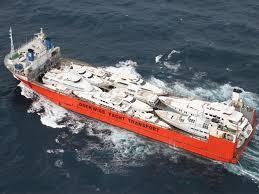
Now, back to the trip that actually did happen. This fishing expedition involved flying to Stuart, FL on a privately owned plane, staying at one of the most well appointed marina’s along Florida’s Treasure Coast, and fishing aboard a 60′ foot Viking meticulously maintained by a dedicated captain and crew.
There are a number of truly beautiful things about private air travel. When does your flight leave? When you get there. Baggage check? Nope. Security line? Nada. Flying with a knife? A firearm? Good for you!
I couldn’t tell you what airport we landed at in Stuart, FL. I can tell you the 236 mile trip takes up to 3 and half hours by car. Our flight consumed less than 50 minutes. Truthfully, I could’ve cared less about where we landed. I was on this trip to catch fish. Not learn about Florida’s private airports. That doesn’t mean you can’t be impressed by the logistical improvements. FYI, flying privately… it never gets old. Never.
It was a smooth landing. Thermals aren’t really an issue during a winter evening. The fuselage door opened. Stairs lowered. A gentleman stood smiling. His hand out to assist with luggage. I learned he was the Captain.
Standing a hair over six feet, he had a youthful, gregarious way about him. A crew cut revealed blond hair. A color I’ll wager came about through years under the sun. Clear blue eyes, an honest face, and an affable demeanor. All the qualities you want in a Captain. None you don’t. His actions revealed a truly genuine interest in ensuring every detail of our trip was taken care of. Every contingency planned for. Every system on the Yacht he commanded, electrical or mechanical, running perfectly.
Of course, one never knows how skilled a Captain is until the vessel leaves the dock. On the water, there’s no such thing as perception being reality. You can’t possibly “fake it till you make it.” You make it. If not, the cost is often much higher than mere loss of reputation.
Luggage stowed, we piled into a large extended cab pickup truck. The Captain parked conveniently a few feet from the plane. So much for walking down a cramped airline aisle made for runway models with full blown anorexia, piling into a trolley, managing not fall down an escalator, or feeling like a sardine in an airport. All just so you can navigate your way to either curbside pick up, or baggage claim.
A 10-minute ride took us to Pirate’s Cove Marina. More importantly, we arrived to board the vessel Aluminator. The remarkable 60’ Viking Sportfishing yacht. She sparkled though the sun had set long ago. Even the moon was absent from the night sky.
As if the vessel alone wasn’t impressive enough, a brand new, custom built 16 ft Dragonfly Boatworks, LLC Emerger model flats boat rested on the expansive bow.
Located in Vero Beach, FL, I learned that the iconic recording artist Jimmy Buffett owns a large share of Dragonfly Boatworks. Given the apparent build quality, I’ll comfortably speculate that Buffet’s involvement is more financial than hands on. I’ll also comfortably speculate that Dragonfly Boatworks has a drug free workplace policy. A potential hurdle of sorts for that certain “son of a sailor.”
Stern livewell aboard the 16′ Emerger Flats Boat.
Now, back to the Viking. I challenge the most jaded yachtsman to pass by this vessel without stealing a glance; if not a prolonged, jaw dropped, stare. You enter the main saloon is possible by passing through an automatic, push button, sliding door. The door closes automatically about 10 seconds after you pass through. Once through, the interior provides no shortage of eye candy.
Live to Fish aboard 60′ Viking Yacht, view from inside the main saloon facing the stern. http://www.livetofish.com
Live to Fish aboard 60′ Viking Yacht, view upon entering the main saloon, facing towards the bow.
Guest room aboard the 60″ Viking.
In Pirate movies, there’s almost always a scene involving a pile of gold, precious gems, and assorted treasures. Usually revealed in some deep dark cave, after much bloodshed and hardship. I didn’t see a pile of gold doubloons, but I doubt my reaction would have been the least bit different. My eyes absorbed what was both an exceptional feat of marine engineering and a true-life representation of the finest in interior yacht design. Counter tops. Granite. Couches and furniture – where do you find leather that soft? Precious hardwoods gleamed throughout. I wondered how many coats of varnish it takes to create such a glamorous sparkle? Nevermind. I don’t want to know.
My first impression of the Captain proved true. A walk through the Aluminator’s spacious kitchen, well-appointed stateroom, spacious master cabin, and twin guest bedroom, revealed food and drink stocked in an over abundance of supply and variety. You couldn’t have found a speck of dust or dirt if you crawled on your hands and knees with an ultra bright headlamp and magnifying glass. The same could be said for how well kept the engine room was.
The trip to the area where trolling for sailfish consumed about 20 to 30 minutes. Cruising speed was in excess of 30 mph. Trolling speed varied between 6 and 7 knots. We came prepared; trolling 4 hooks, 2 teasers, and two dredges. The hooks were attached to rods equipped with the to hell and back reliable Shimano TLD 25s and 30s. (LThe teasers were controlled by massive electric reels. A control box for the electronic reels could also be found on the second level helm station. Located in the ceiling above the Captain provided him with quick, uncluttered access.
http://www.livetofish.com
http://www.livetofish.com
http://www.livetofish.com
In addition to the Captain was a first mate. This guy ran the show in the stern. He watched every line, every rod, and every school of baitfish; simultaneously. It was as if he had a fish eye lens for vision. The first mate had a powerful build, dark hair cut short, and a full-grown beard. His attire, from head to toe, spoke volumes. A well-worn trucker’s hat, quintessential Costa Del Mar sunglasses with blue 580G lenses, and the ever popular white rubber boots. Despite a heavy Scandinavian type build, his reflexes were on par with an Olympic ping pong player. I’d put him up against the best the Chinese have, any day.
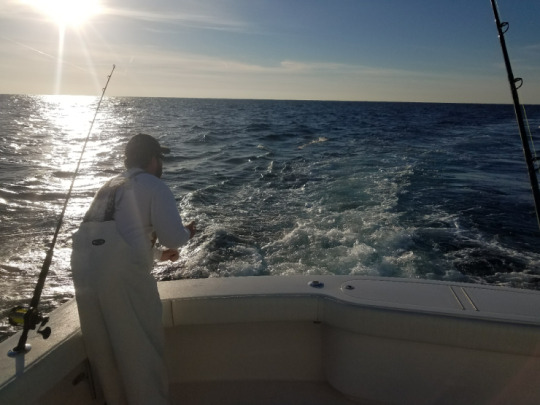
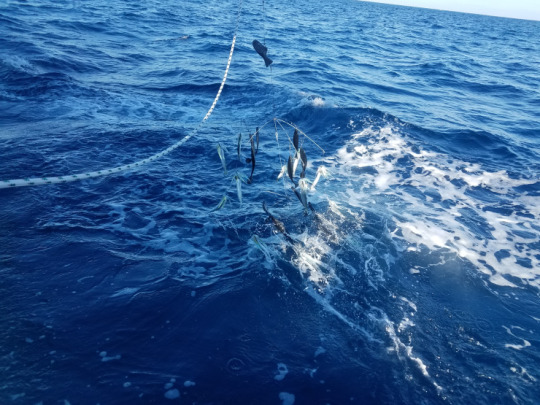
A teaser rig consisting of a recently caught mullet hung from an outrigger protruding from each side of the Viking Sportfishing boat.
As soon as one of the rods showed the tell tale bend of a sailfish, the first mate yanked the rod from the rocket launcher, yell to the Captain, and jerk back on the rod to keep the sailfish interested. Those of us aboard to fish took turns in an organized rotation whenever a fish was caught. Despite being in the sailfish capital of the world, a bent rod wasn’t a guarantee of catching a sailfish.
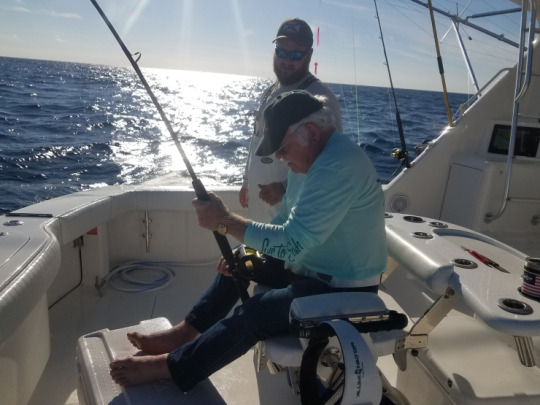
Live to Fish Shirt worn while fighting a sailfish
Each rod had 200 yards of 40 lb test monofilament on. At http://www.livetofish.com, we sell 104 different kinds of 40 lb test line alone. Overall, we offer 1,789 options for fishing line and leader material.
Reeling in the 200 yards of line was no easy task. Though the Captain would back down on the fish, the drag was set to no more than 8 pounds. This light drag was necessary to avoid a break off. 200 yards of line out, with a game fish on the end, creates a significant amount of stress on the line. What ensued was an extended period of fast paced reeling to recover all the line and prevent slack in the line. You wouldn’t know whether you had a sailfish, or a Bonito, until the fish was close enough to the boat.
There were a fair number of Bonito caught. They’re a smaller relative of the tuna. When caught, these fish quickly found their way down into one of the ice filled coffin boxes. They would be used as bait or perhaps to feed a hungry crew member.
We were after sailfish. To this end, the Captain did not disappoint. We fished for two days with sailfish being caught each day. The second day saw three sailfish caught. Hence, three sailfish flags were raised before returned to our slip.
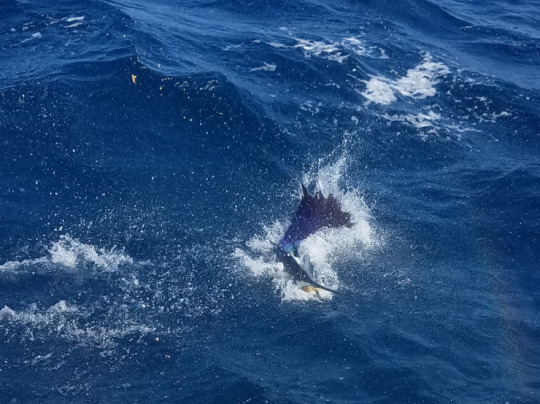
Atlantic Sailfish Caught by Live to Fish team member
The sailfish is indeed an impressive species. It’s known as the fastest fish in the Ocean; exceeding speeds of 68 MPH. They are carnivores. Hence, our bait selection of mullet and rigged ballyhoo. At Live to Fish, we sell both artificial and frozen ballyhoo.
We’d fish until about 3:00 PM. With the days starting at 6:00 AM, there were no objections to heading in at this time. When fishing for the entire day, the question of lunch usually presents itself. What to bring is most often determined by what’s easiest to transport. Ready made sandwiches top the list due to the fact that they don’t require any preparation. Lunch on this trip consisted of sandwiches, but they were far from the ready made versions. Fresh deli meats of more types and varieties I can recall filled one of the numerous refrigerated food drawers in the beautiful galley. Fresh deli breads, different types of mustard, and other toppings were all available.
With the setup as it was, all you had to do was sit back on one of the overly comfortable seating areas, waiting for the first mate to shout, “fish on!” Though everyone agreed that this type of fishing in ultimate luxury is something anyone could get used to, there’s something about inshore fishing that will always be more appealing to me.

Pursuit of Atlantic Sailfish in Complete Luxury. Most articles on our blog are informative. The goal of such articles is to help our readers gain more understanding about fishing, boating, and the equipment available.
0 notes
Link
Some winter fishing tips from Live to Fish, www.livetofish.com #winterfishing #floridafishing
0 notes
Text
Winter Fishing Tips
How different is Florida fishing in the winter compared to fishing in the Spring or Summer? All things considered, more aspects are alike than different. However, knowing the differences and how to best adjust your tactics can easily make the difference between coming home empty handed, or coming back with your limit. A few of the biggest differences is that inshore fish change their…
View On WordPress
0 notes
Link
Benefits of choosing brands under the Navico, Inc., umbrella: Simrad, Lowrance, and B&G. Available from Live to Fish, 9942 State Road 52, Hudson, FL 34669 or visit us online at www.livetofish.com
0 notes
Text
Who's the Best in Marine Electronics?
Simrad, Lowrance, and B&G are under the Navico, Inc., brand umbrella.
In years past, Garmin was one of the more popular marine electronic brands. Well, times are a’ changin’, and for good reason. Ever heard the saying that someone became, “too big for their britches?” That would apply to what Garmin has evolved into. Garmin has it’s hand in nearly every cookie jar possible. Automotive, Sports & Fitness, Outdoor Recreation, Marine, and Aviation. They started back in…
View On WordPress
0 notes
Photo

Passing on important life lessons - how to always be sure you get the large end of the Wishbone at Thanksgiving.
0 notes
Photo

The Loophole being towed to the boat ramp for placement on the trailer.
0 notes
Link
0 notes
Text
G Loomis NRX Rods - the best of the best
Why the NRX series from G Loomis represents some of the best of the best.
In addition to numerous other brands and various models made by those respective brands, Live to Fish, www.livetofish.comcarries the NRX line of G Loomis fishing rods. These rods are available in our showroom at, Live to Fish, 9942 State Road 52, Hudson, FL 34669 as well through contacting us by calling 844-934-7446. A, “contact us,” link is available on our website too.…
View On WordPress
0 notes
Photo

New Puppy to join the Live to Fish team, #livetofishsports www.livetofish.com
0 notes
Photo


The next audio install for Live to Fish www.livetofish.com #livetofishsports
0 notes
Photo

Drifting in on an incoming tide during a full moon. Photo taken without flash but no editing was done whatsoever. www.livetofish.com
0 notes
Photo


Getting a little chilly on the water. Not bad if you manage to stay out of the wind.
0 notes
Video
tumblr
Heading out to see what will hit a fly just before night fall. One of the most amazing things about this less than 10 second video is that there was no editing done of any kind. It really is that beautiful. Live to Fish, 9942 State Road 52, Hudson, FL 34669 www.livetofish.com #livetofishsports
0 notes
Text
THE IMPORTANCE OF OUR MANGROVE HABITATS
The mangroves are critical to maintaining numbers of tarpon and snook populations.
No, this isn’t going to be an article containing one or more rather mundane, so called, “fishing tips,” that pretty much everyone who’s ever held a rod, already knows about. No, what you’ll read won’t sing praises to some new rod or reel. Live to Fish has more products available than you could ever use, even if you fished every single day for the rest of your life. Yet, we’re not going to…
View On WordPress
#Fishing#florida mangrove#Inshore Fishing#Inshore Flats Fishing#live to fish#mangrove habitat#mangroves
0 notes
